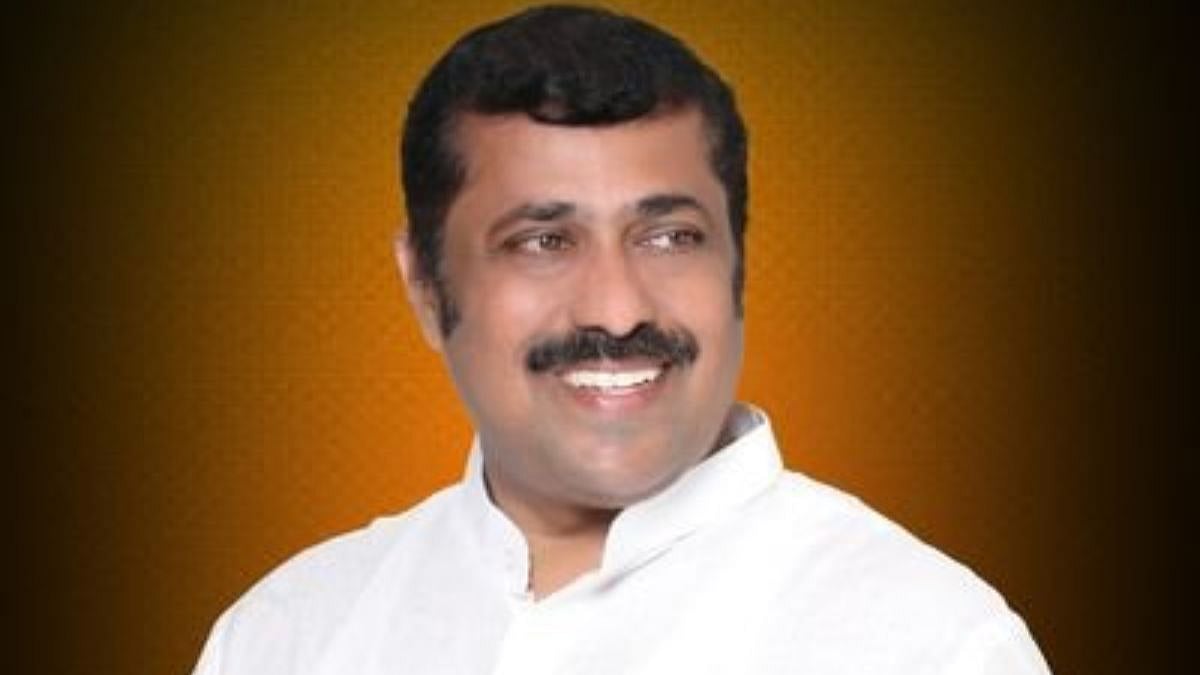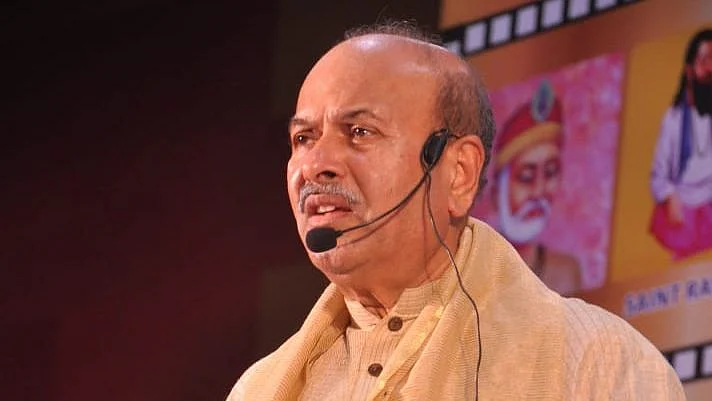Ahimsa is beyond all dharmas, religions, belief systems, creed, sect, preaching and even rationalists those who don't believe in God. In the purusharth in ancient systems, Dharma is considered as the first important object. Parmo Dharma is Ahimsa! It simply means live and let live. Do not trigger and dot get triggered!
But how can you practice Ahimsa deeply unless you discern? There has to be viveka or deep discernment at different levels, i.e., at physical, energy, emotional, mental and spiritual levels.
How do you practice Ahimsa?
Ahimsa must be practiced towards others as well as towards self. It must be practiced in thinking, feeling, speech and action. Thinking and feeling are very important because human being is a thinker. Speech and action are like fruits and thinking and feeling are the seeds. Accordingly, you generate entitlement or karma depending upon your thoughts, feelings, speech and action. There are two aspects of Ahimsa – showing politeness and courteousness is one. Another being non-injury.
Ahimsa to Self
At Physical Level:
Do not indulge in things that are not healthy for the body. Avoid addictions, wrong food habits, overeating, being workaholic. Sometimes you may be overworked for a particular time, however, it should not become a routine. Take enough rest.
In the name of sacrifice, you harm your body. For the sake of taking care of your family, you work excessively and damage your body. This is Himsa because you may become a burden for your family if you fall sick. If you leave the body early, you will cause tremendous pain to your family. Are you not concerned about your family or those who are dependent on you? What will happen to them? Therefore, maintaining your health is Ahimsa! Eating right, doing right exercise, chewing well, moderation in work along with joyful interest and enthusiasm, sleeping well and relaxing your body are all part of practicing Ahimsa!
When you are sitting, try to be comfortable and relaxed. Say, you are going in a vehicle, be relaxed. The driver is driving and if you are tensed all the time, then it is Himsa to yourself and also pressure on the driver. Hence, practice very high level of Ahimsa to self and others.
In Emotions:
What are the emotions you are experiencing, what is it that you are radiating? It affects people around apart from affecting yourself and can also lead to psychosomatic ailments. People having health problems, such as, high BP or diabetes, generally have psychosomatic issues, like, having negative thoughts, harbouring undesirable feelings, anger, frustration, resentment, etc. They are also radiating these vibrations in their near vicinity. Therefore, affecting others around in the immediate environment.
Come out of Remorse! “I should have done like this or I shouldn’t have done like this.” Avoid excessive mental criticism directed to yourself. You must come into a state of comfort with self, joyfulness towards self. You have to work on, “Why am I not joyful?” What do I need? What gives Joy? You may trick yourself into thinking that achieving this or that can give you joy. Look at the people who have these things. Are they having joy? It’s an internal factor, doesn’t depend on things or accomplishments outside.
In Thoughts:
Watch what you think about yourself. Do not put yourself down. Putting restricting and limiting thoughts towards yourself is Himsa. This is practicing non-injury at a deeper level. Therefore, discernment is required, without which you cannot practice deeper level of Ahimsa.
Observe where your mind is wandering, what thoughts are you pursuing, what fears are bothering you, what doubts are you stuck with? These have a direct effect on your health and others around.
Hence, encourage right thoughts, positive and uplifting thoughts, positive visualisations, but remove wrong thoughts; boost right emotions, warm, nurturing, loving feelings and take away undesirable emotions; use right speech plus put off injurious and abusive speech.
How can you remove these tendencies of thoughts, feelings and speech? We shall discuss this shortly.
Ahimsa towards Others
At Physical Level:
How are you dealing with people? Are you showing anger, in your eyes, expression, other body movements? Is your body relaxed or stressed, contracted or relaxed? In stress, all the time the muscles are moving, i.e., fidgeting the hands or tapping your legs. Stress is moving you and you are strewing stress in your environment!
Consequently, if you are relaxed, you are showing Ahimsa to yourself and to others as others can get affected by your expressions.
Do you slam something on the table when upset? Some people bang utensils, books or doors. What is the energy or emotion released? What could be the thinking at that point? This kind of releasing of the energy can be damaging to yourself and others. Kindly note that you cannot damage others without damaging yourself! Ahimsa at physical level is of utmost importance. Actions of screaming, yelling, throwing, hitting can be excessive and harmful to your own body and others.
Find various ways of expending this energy that gets released through arms and legs due to the adrenaline rush in the body when in stress! Disburse this energy from hands and legs by squeezing on a ball, pushing on the chair or wall without even others noticing it, walking, pushing on the floor with feet, doing some work around the house, etc! You may observe your breath when upset. You will find it to be erratic. Practice Rhythmic Yogic Breathing exercise to calm down.
At Mental Level:
When you judge someone, it is injury. You may feel justified, as it may appear true. However, you are strengthening that quality in the person. Sometimes, a person may not be having that quality, but due to your persistent negative thought you may develop that quality in the person. Imagine what you are doing to your children, to your family members? Not necessarily harming someone not connected to you, but the very people who matter to you. What are the persistent thoughts that you are producing about them? That is what you are developing in them! You are impregnating them with these thoughts. This is negative programming! If they already have that quality, you are strengthening by criticising repeatedly in the name of honesty. If they do not have it, then you are introducing this tendency in them by unnecessary speculation.
So excessive mental criticism, exacting on others, is all part of Himsa or injuriousness. Avoid injury through excessiveness.
In Speech:
Avoid harsh and injurious words, slandering, speculating, blaming. Speech is important because verbal expression throws light on your internal thoughts and emotions. So, watch what you think and feel in order to work on Verbal Ahimsa. You must reflect within in order to erase the unwholesome feelings and thoughts.
You have freedom to do what you want, but you have no freedom to injure others. You must not dominate. You must live and let live.
Do not trigger anybody unnecessarily and don’t get triggered in thought or speech. Speech should be kind, useful, purposeful, target oriented, addressing the need of a person with warmness and dealing with people with politeness and courteousness.
In Action:
You have to have immense patience in dealing with people. Different people have different capabilities and development. Some are slow. So, show tremendous patience. Be tolerant to others’ customs, traditions, opinions, races, sexes, nations, various kingdoms of nature.
Validate - Do you get irritated by the presence of some creatures? When you look at them, do you withdraw? How tolerant are you if somebody belonging to a different race sits by your side in a bus or train? How are you with people who are below poverty line? Do you accept other castes, religions, nationalities?
How open are you to others’ opinions? Are you ready to listen to others? Empathy means to hear others. How patient are you to your family members, your workers or sub-ordinates? Can you empathise with others’ point of view? Are you self-conceited, believing that only your point of view is right? How about looking from a neutral point of view?
There is something to learn from every situation. Are you using your discretion? Why this situation, what caused it, how can it be addressed? Understand every situation from multiple points of view. If you can look from others point of view, 70% of the time, there is no action to be taken. If you are able to see from a neutral point of view, then may be 95% of the time, nothing needs to be done! And if you look from a higher point of view, you will understand that everybody is different. Everyone is a child of God. Then 99% of the time, you don’t have any action to take. Only 1% of the time you must take appropriate action.
Inaction is also injury. Deal with politeness and courteousness but take right action when needed. Right kind of force, right amount of force and at right time must be taken. You must prevent injury. Tolerating harmful actions is in-action. That is Himsa. However, do not take action with vengeance, revenge or to show strength. This can be excessive action. You must validate, how much force to be used. You must take action for preventing injury or for mobilising. The intention is important.
Why do you have to put somebody in jail or rigorous imprisonment? Jail is supposed to be a Sudhar Ghar, i.e., a transformation home and not a restriction home. Do not condemn the criminal, instead condemn the crime. You must empathise under what conditions has this person become a criminal? What kind of in-action was done at home, school, society, in the legal mechanism? How many injustices have been done for this person to become a criminal? The society, right from family, school and environment is responsible at different stages of inaction leading to a serious crime later. Thus, inaction is injury. Take right action because it is a necessity but by validation and compassion.
Dealing with Non-Injury and Compassion with Children
Our language around kids often includes labelling, judging, comparing, shaming, etc. All this is Himsa. We use the word “no” multiple times with them and also use put downs often. In order to deal compassionately with children, lead them by example. Do not worry that children are not listening to you, worry that children are observing you all the time! You cannot act or hide. You cannot prevent them from observing what you are doing. You have to be a role model. Whatever you want to inculcate in them, you must practice it first. Your responsibility is to bring up children to a stage where they are independent, tolerant, compassionate, joyful and useful for humanity.
Prolonged loving kindness is required in case of children. Address their needs, spend time with them willingly and not under stress. Also, teach them to do things with choice and not under coercion. Their lives are constantly under pressure. Be it peer pressure, competition or societal expectations.
Children are influenced not just by parents but by everybody in their immediate environment. They are also exposed to media, internet, TV, mobile, etc. There are so many avenues to learn from. That's why it is very difficult for parents to prevent them from distractions. Hence, they must become fantastic role models to lead them in right direction. It is a big duty. Of course, change must be brought in the society, educational reforms have to come in, moral values must be given importance to.
Create a fault-free environment, a compassionate zone, where empathy flows in. Where everyone hears each other. Where everyone understands their own needs and that of others. Everybody works towards addressing as many needs as possible without riding guilt trips, blaming and judging.
Erasing the Unwholesome Thoughts and Emotions
It involves erasing using your will aspect, by touching the Ajna centre with fingers of the left hand and by using the divine energy from the Crown centre to erase the unwholesome feelings and thoughts.
Reflect within for the thoughts or feelings to be removed. Then touch your Ajna, concentrate on the Crown and Erase.
Inner reflection is Jnana Yoga. It is accurate perception. Erasing is correct expression, i.e., Karma Yoga which also involves firm resolution and positive affirmation. Therefore, watch what you think and feel. Erase whatever is unwholesome. Make positive affirmations to inculcate the opposite good qualities. Live a life of moderation, self-discipline and spirituality.
Be aware of all the weaknesses and unwholesome tendencies, as they are present in layers, like onion. They have to be repeatedly removed by inner reflection. It can be done by chanting mantra, doing inner reflection, practicing forgiveness, and then planting right seeds by positive affirmations and seeking for blessings. By becoming a channel for the divine blessings, say in a meditation, you get purified. That’s an active way of refining yourself.
Attitude of Gratitude
Why are you being supported by mother Earth? Nature provides you with fruits and vegetables; you get light from the Sun; parents and teachers nurture you; there are so many who contribute to you indirectly. You must have gratitude to them all. Live with an attitude of gratitude for every comfort that you have.
There is a purpose for our existence on Earth. That is for the planetary spiritual evolution, which means evolution for everyone. That's the target!
Try the YPV Sadhana app for practicing Rhythmic Yogic breathing, Forgiveness Sadhana, Planetary Peace Meditation and exercises to purify and calm yourself. Also, to get rid of any pain and guilt. These techniques further help to boost the immune system.
You can join our Facebook live sessions which are now extended up to 31st July 2020 on Facebook. Timings: Morning 7.15 AM, Afternoon 1.00 PM, Evening 6.30 PM. These sessions offer an opportunity to be of great service to the entire Earth, apart from improving your immune system and health at various levels.













